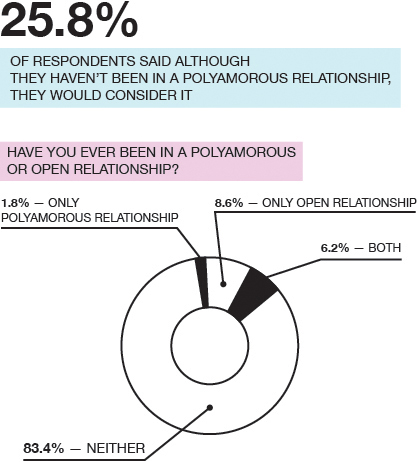
As an increasing number of students express varying sexual orientations and preferences, polyamory and open relationships at Binghamton University are also on the rise.
Fifty-three respondents to Pipe Dream’s sex survey said they have been in a polyamorous relationship, and 98 indicated they have experience with open relationships. Although 83 percent of respondents still have no experience with polyamorous or open relationships, 25 percent said they would consider one.
Group sex has also seen a rise at BU. In Pipe Dream’s 2016 sex survey, which received roughly 750 responses, just 11 people said they had taken part in group sex, but in this year’s survey, 60 respondents said they had experience with group sex.
According to Ann Merriwether, a BU lecturer of psychology who conducts research on causal sex and relationships, there have been changes in the sexual habits of BU students since she began her research in 2011. Merriwether said her team has seen an increase in women engaging in casual sex and a decrease in sex. They’ve also seen more students expressing varying sexual orientations, with many beginning to describe themselves as “mostly heterosexual” as opposed to “exclusively heterosexual.”
Nevertheless, Merriwether said her team still estimates that less than 1 percent of BU students identify as polyamorous.
“In the context of that we’ve asked them about open relationships and polyamory and we have gotten very few people that acknowledge that kind of relationship,” Merriwether said. “And I don’t know if it’s because that’s not the place they are in their relationship’s development, or they are there now but they aren’t calling it that. I think some people have a lot of misunderstanding of what polyamory is.”
While it has varying definitions, polyamory is the practice of maintaining multiple relationships with consent from all parties. For some people, this is a triad, or a relationship where all three people are actively involved. Polyamory can also consist of primary and secondary partners, where individuals have a main relationship while also maintaining secondary relationships.
One polyamorous student, who asked to remain anonymous, said he defines being polyamorous as engaging in emotional and physical relationships other than his primary partner.
“I’m still very new to this type of relationship and figuring out my boundaries and my partners boundaries with it,” he said. “It’s something I’ve wanted to try for a little, and while there are surprises and obstacles it’s generally what I thought it would be on my end.”
He also said he has found a surprising number of polyamorous students at the University, most of whom are open about their experiences.
“A lot of people I know here are in polyamory relationships, a surprising amount if I’m being honest,” he said. “And while it’s not a community in that same way the queer community is a community, my [polyamorous] friends are always willing to talk about their experiences and help me with my new experiences.”
While Western culture typically promotes monogamous relationships, Merriwether said she believes there is not a strong amount of evidence that suggest humans are strictly monogamous.
“There’s a lot of polygamy and a lot of people going outside their relationships, a lot of extra relationship pairing that isn’t negotiated,” Merriwether said. “So when people describe us, they’ll say we’re monogamous-ish. We can pretend we are, but if you look around the world there are so many cultures where there are multiple wives, multiple husbands.”


